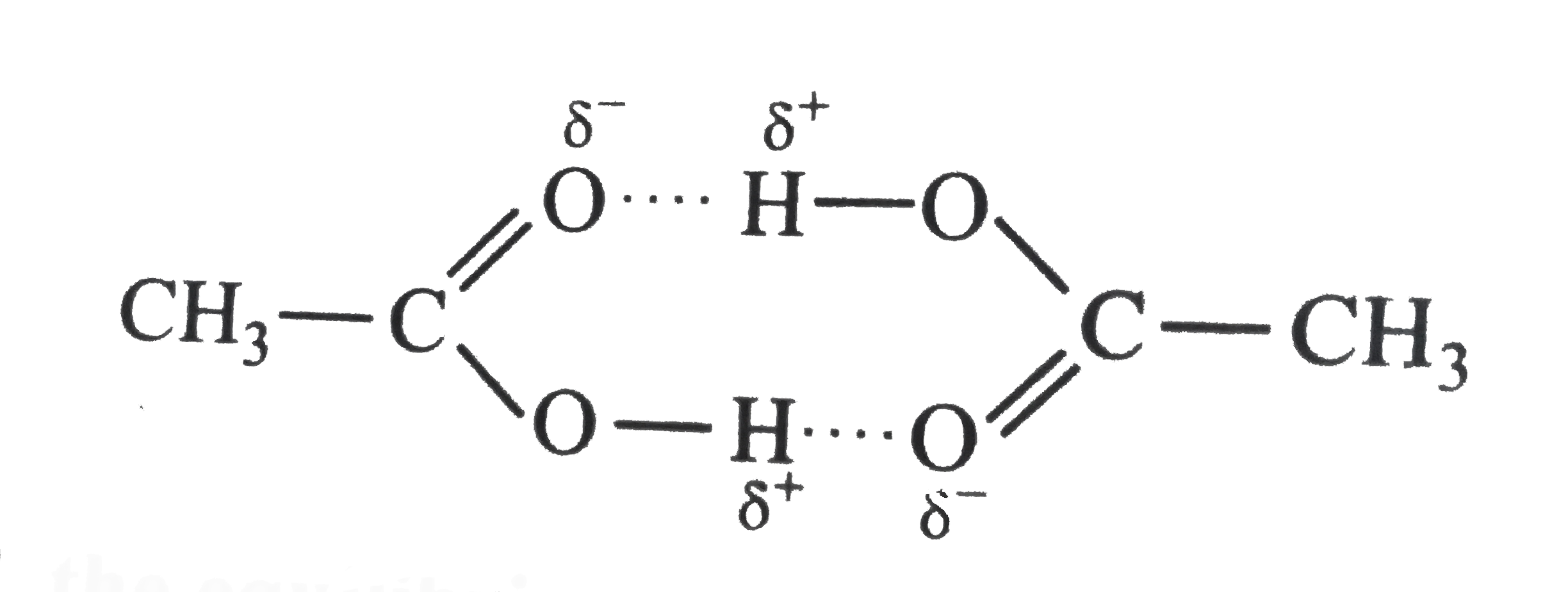If heat of dissociation of CHCl2COOH is 0.7kcal /mole , the , ΔH for the reaction CHCl2COOH+KOH→CHCl2COOH is +H2O
−13kcal
+13kcal
−14.4kcal
−13.7kcal
The correct Answer is:A
To solve the problem, we need to determine the enthalpy change (ΔH) for the reaction involving the weak acid CHCl₂COOH and the strong base KOH.
1. Identify the Given Information:
- Heat of dissociation of CHCl₂COOH = 0.7 kcal/mole.
- The reaction is:
CHCl2COOH+KOH→CHCl2COO−+H2O
2. Understand the Nature of the Reactants:
- CHCl₂COOH is a weak acid.
- KOH is a strong base.
3. Use the Known Heat of Reaction for Strong Acid and Weak Base:
- When a weak acid reacts with a strong base, the heat evolved is generally around -57.7 kJ/mole.
- Converting this to kcal:
−57.7 kJ/mole×1 kcal4.184 kJ≈−13.8 kcal/mole
4. Calculate the Total ΔH for the Reaction:
- The ΔH for the reaction can be calculated using the formula:
ΔH=Heat of reaction+Heat of dissociation
- Substituting the values:
ΔH=−13.8 kcal/mole+0.7 kcal/mole=−13.1 kcal/mole
5. Final Result:
- The ΔH for the reaction CHCl₂COOH + KOH → CHCl₂COO⁻ + H₂O is approximately:
ΔH≈−13 kcal/mole
Conclusion:
Thus, the final answer is:
ΔH=−13 kcal/mole
- Heat of dissociation of CHCl₂COOH = 0.7 kcal/mole.
- The reaction is:
CHCl2COOH+KOH→CHCl2COO−+H2O
- CHCl₂COOH is a weak acid.
- KOH is a strong base.
- When a weak acid reacts with a strong base, the heat evolved is generally around -57.7 kJ/mole.
- Converting this to kcal:
−57.7 kJ/mole×1 kcal4.184 kJ≈−13.8 kcal/mole
- The ΔH for the reaction can be calculated using the formula:
ΔH=Heat of reaction+Heat of dissociation
- Substituting the values:
ΔH=−13.8 kcal/mole+0.7 kcal/mole=−13.1 kcal/mole
- The ΔH for the reaction CHCl₂COOH + KOH → CHCl₂COO⁻ + H₂O is approximately:
ΔH≈−13 kcal/mole
Thus, the final answer is:
ΔH=−13 kcal/mole
Similar Questions
If heat of dissocitation of CHCl2COOH is 0.7 kcal/mole then ΔH for the reaction:
CHCl2COOH+KOH→CHCl2COOK+H2O
View SolutionComplete the following reactions :
(CH2COOH)2+NaOH→
View SolutionThe heat released in neutralisation of HCI and NaOH is 13.7 kcal/mol, the heat released on neutralisation of NaOH with CH3COOH is 3.7 kcal/mol. The ΔH∘ of ionsiation of CH3COOH is
View SolutionComplete the following reaction ,
(COOH)2+H2SO4→
View SolutionHeat of combustion of ethyl alcohol is 325 kcal and that of acetic acid is 209.5 kcal, calculate the heat evolved in the following reaction.
C2H5OH+O2→CH3COOH+H2O
View SolutionComplete the following reactions :
2CH3COOHP2O5−−→
View SolutionName the functional group present in C2H5COOH
View SolutionCalculate heat of dissociation for acetic acid from the following data:
CH3COOH+NaOH→CH3COONa+H2OΔH=−13.2kcal
H⊕+ΘOH→H2O,ΔH=−13.7kcal
Also calculate heat of dissociation for NH4OH if
HCI+NH4OH→NH4CI+H2O,ΔH=−12.27kcal
View SolutionAcetic acid CH3COOH can form a dimer (CH3COOH)2 in the gas phase. The dimer is held togther by two H−bonds with a total strength of 60.0kJper mole of dimer

If at 25∘C, the equilibrium constant for the dimerisation is 1.3×103, calculate ΔSΘ for the reaction
2CH3COOH(g)⇔(CH3COOH)2(g)
View SolutionIUPAC name of the compound BrCH2−CHCl−CHCl2 is
View Solution
